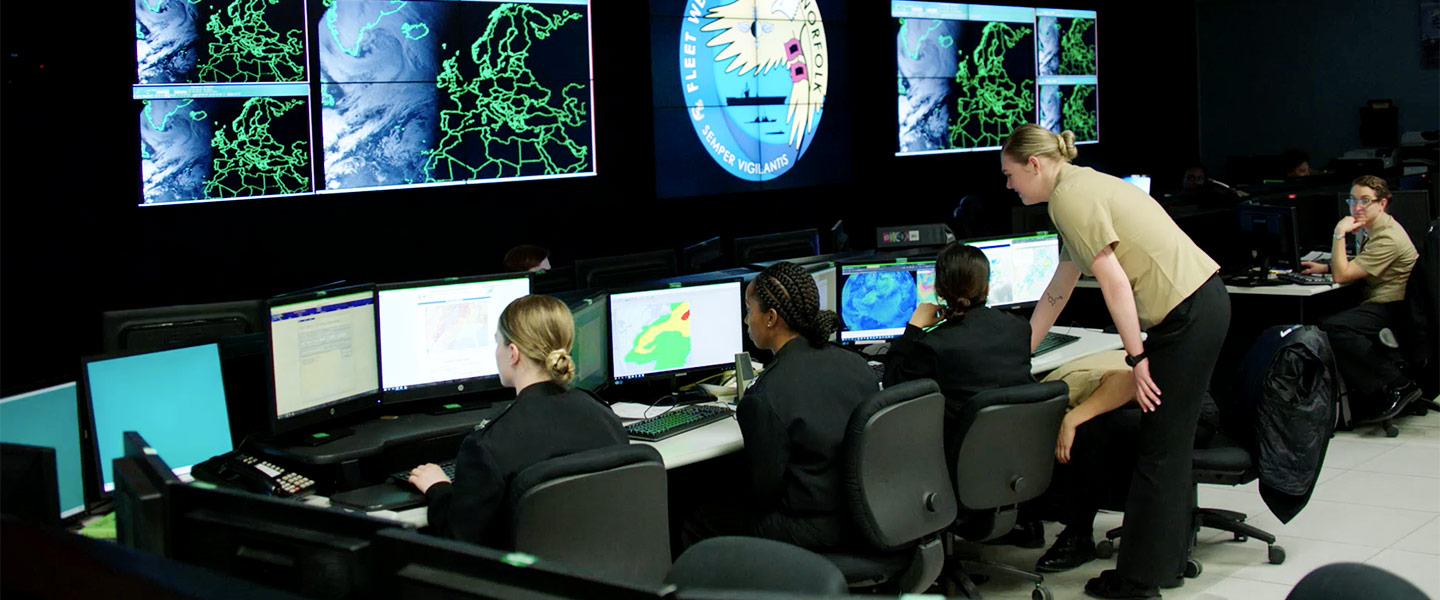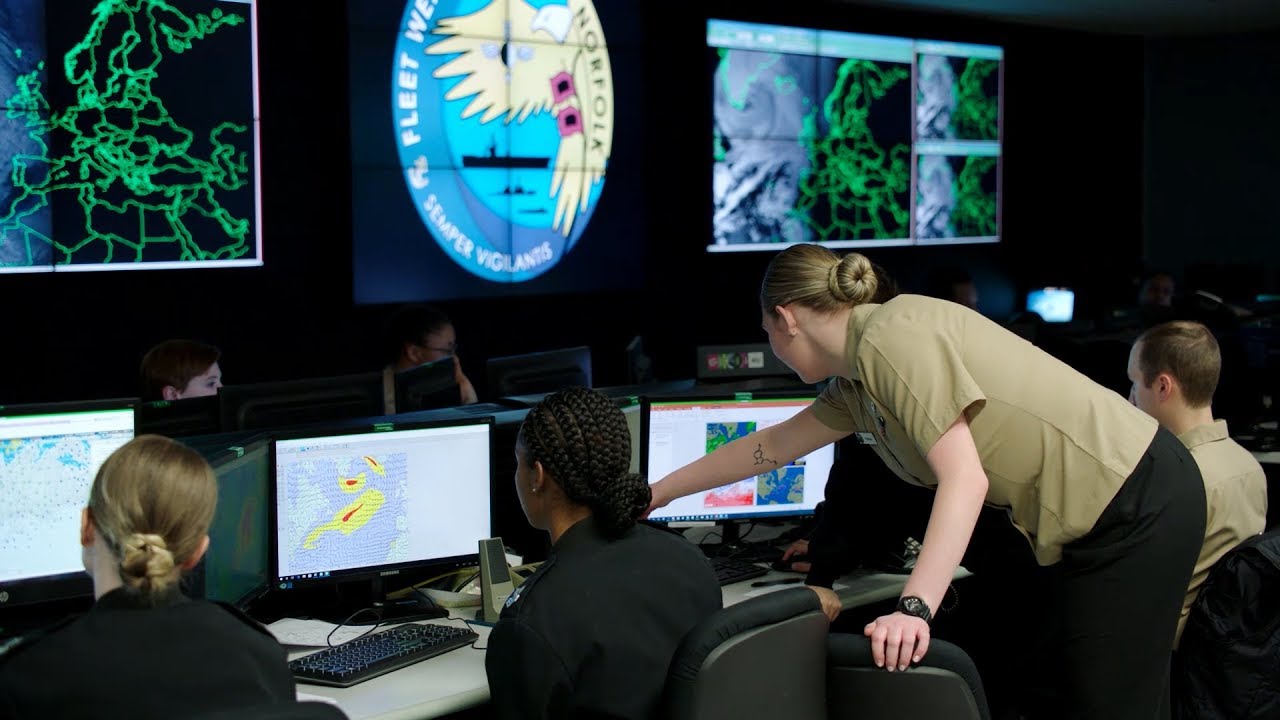What to Expect
More Information
Responsibilities
As an Aerographer’s Mate, you’ll supply important environmental information that impacts Navy missions of all types. You will perform duties that may include:
- Collecting, recording and analyzing weather and oceanographic information
- Making visual and instrument observations of weather and sea conditions
- Operating meteorological satellite receivers
- Interpreting satellite data, radar imagery, and meteorological and oceanographic codes
- Preparing up-to-date weather maps and oceanographic data
- Issuing weather forecasts and warnings
- Providing weather/oceanographic briefings
- Using, testing, calibrating and performing minor and preventive maintenance on meteorological instruments
- Working under the oversight of METOC Officers who manage information related to meteorology and oceanography
Work Environment
Aerographer’s Mates serve on large ships such as aircraft carriers, amphibious ships and cruisers, as well as at Naval air stations, weather centers and other shore-based facilities located in the U.S. or overseas. The work is highly analytical. Typically, duties are performed in a clean, comfortable office-like environment and involve working closely with others with little supervision.
Training & Advancement
Upon completion of initial Recruit Training (known as Boot Camp), those pursuing an Aerographer’s Mate role report to Keesler Air Force Base, MS, where they receive formal Navy technical training at “A” School for 19 weeks. Here, they develop a working knowledge of meteorological observation, recording and equipment in preparation for their first assignment.
From there, AGs work toward qualifying as environmental observers and prepare for advanced training through “C” School, which comes with career progression. Over time, they will transition from the role of observer to forecaster to supervisor.
Promotion opportunities are regularly available but competitive and based on performance.
Post-Service Opportunities
Specialized training received and work experience gained in the course of service can lead to valuable credentialing and occupational opportunities in related fields in the civilian sector.
Education Opportunities
Beyond offering access to professional credentials and certifications, Navy technical and operational training in the meteorology and oceanography field can translate to credit hours toward a bachelor’s or associate degree through the American Council on Education.
You may also continue your education through undergraduate degree opportunities like the Navy College Program and Tuition Assistance and the Post-9/11 GI Bill.
Qualifications & Requirements
A high-school diploma or equivalent is required to become an Enlisted Sailor in the meteorology and oceanography field in the Navy. Those seeking an Aerographer’s Mate position must be U.S. citizens with normal color perception who can meet eligibility requirements for a security clearance. They should have an interest in aviation and weather, good speaking, writing and record-keeping skills; a good working aptitude of math and the capability to do detail-oriented work.
General qualifications may vary depending upon whether you’re currently serving, whether you’ve served before or whether you’ve never served before.
Part-Time Opportunities
There are part-time opportunities available as an Aerographer’s Mate.
Serving part-time as a Navy Reserve Sailor, your duties will be carried out during your scheduled drilling and training periods. During monthly drilling, Aerographer’s Mates in the Navy Reserve typically work at a location close to their homes
For annual training, Aerographer’s Mates may serve anywhere in the world, whether on a ship at sea or at bases and installations on shore.
Take a moment to learn more about the general roles and responsibilities of Navy Reserve Sailors.
Most of what you do in the Navy Reserve is considered training. The basic Navy Reserve commitment involves training a minimum of one weekend a month (referred to as drilling) and two weeks a year (referred to as Annual Training) – or the equivalent of that.
Aerographer’s Mates in the Navy Reserve serve in an Enlisted role. Before receiving the ongoing professional training that comes with the job, initial training requirements must be met.
For current or former military Enlisted servicemembers, prior experience satisfies the initial Recruit Training requirement, so you will not need to go through Boot Camp again.
For those without prior military experience, you will need to meet the initial Recruit Training requirement by attending Boot Camp in Great Lakes, IL. This training course will prepare you for service in the Navy Reserve and count as your first Annual Training.
































































































































